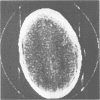Abstract
Sixty patients with severe head injury who did not have an acute intracranial haematoma on CAT scanning are reviewed. The scans are correlated with the level of consciousness at the time of scanning and with the outcome six months after injury. The initial scan was interpreted as being normal in 38% of the cases. In the remainder the most common abnormalities were small ventricles and areas of mixed increased and decreased density interpreted as contusions. All the patients with small ventricles were under 20 years of age. Postmortem examinations were undertaken on 15 of the 19 fatal cases. There was evidence of a high intracranial pressure in 12, cerebral contusions were absent or minimal in 10, there was diffuse immediate impact damage to white matter in six, and there was moderate or severe hypoxic damage in four.
Full text
PDF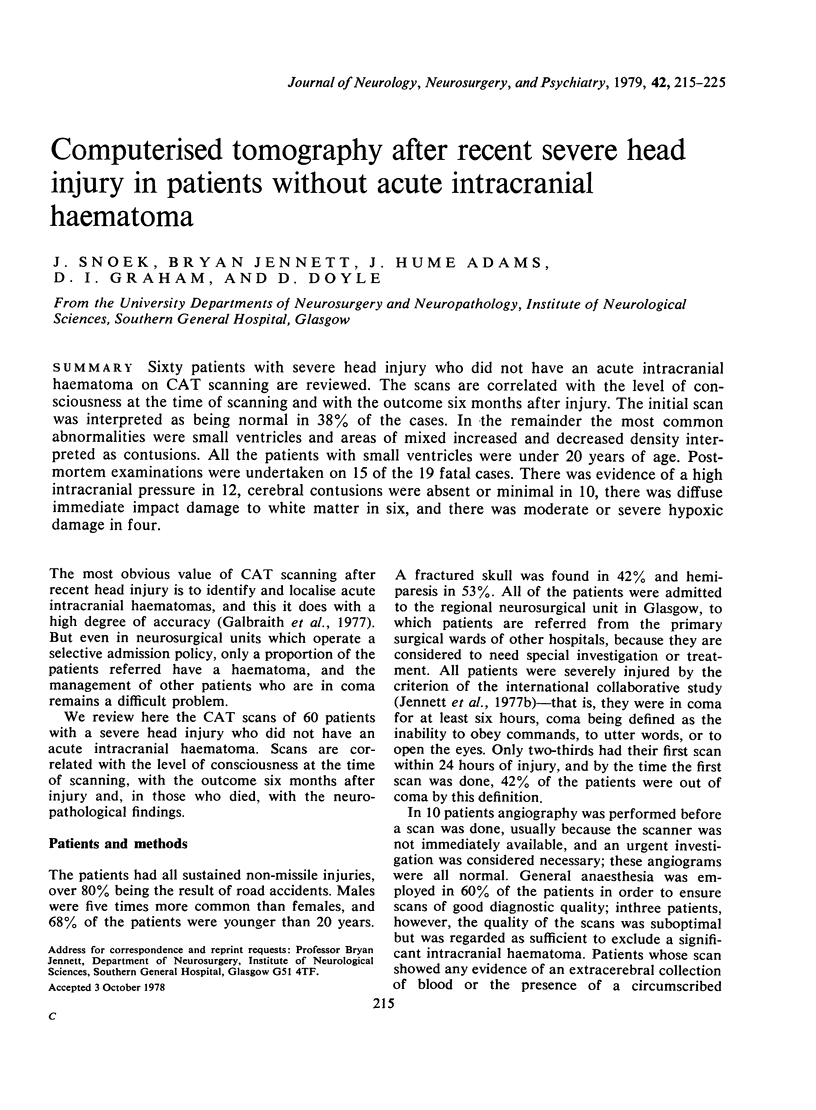

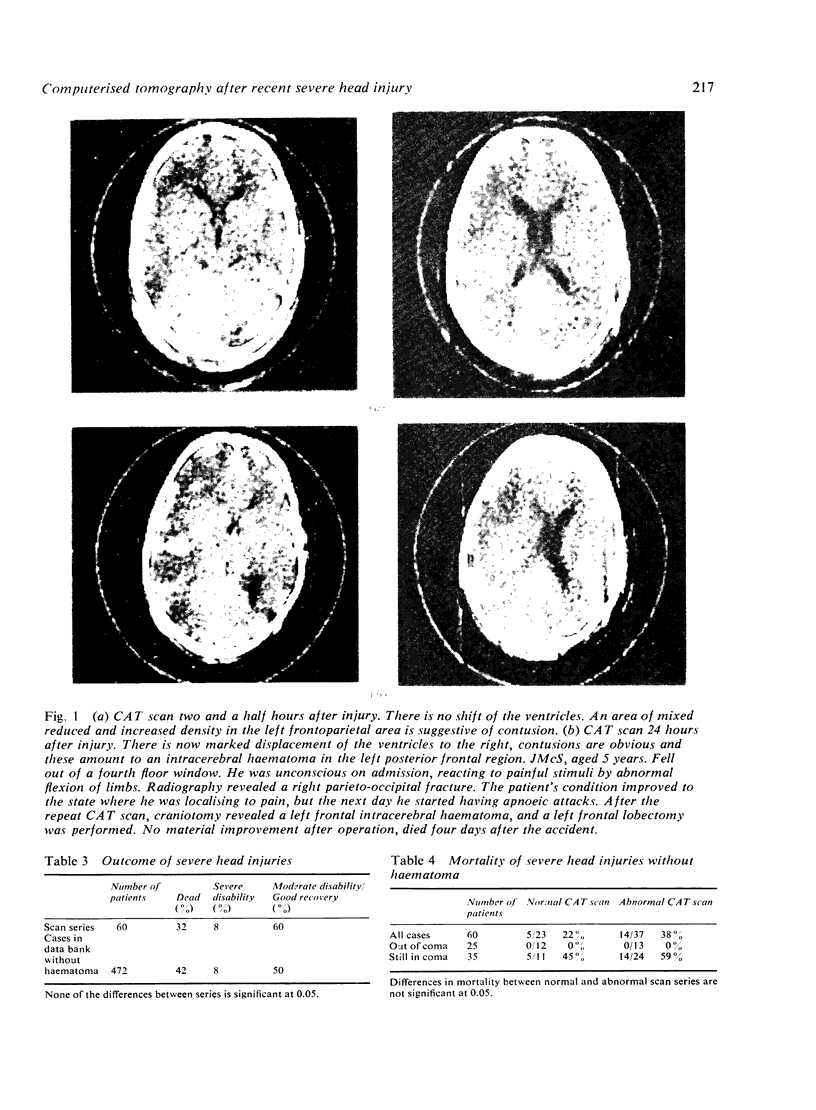
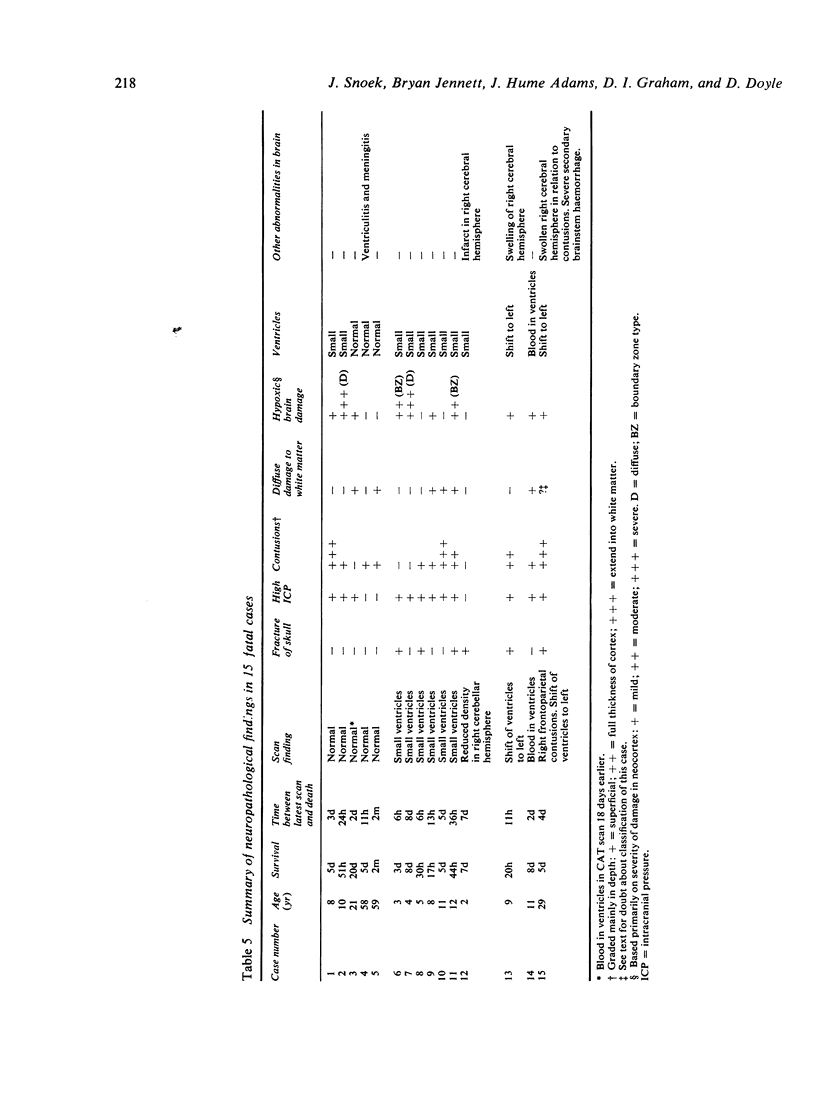
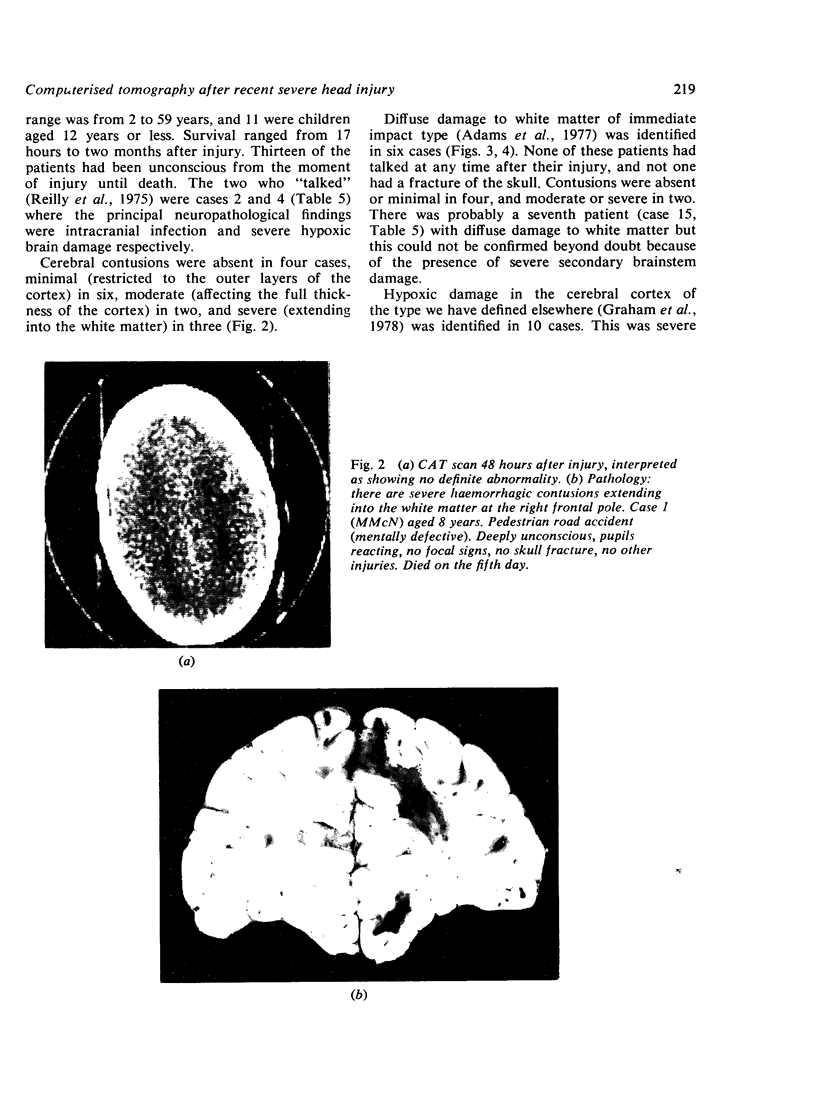
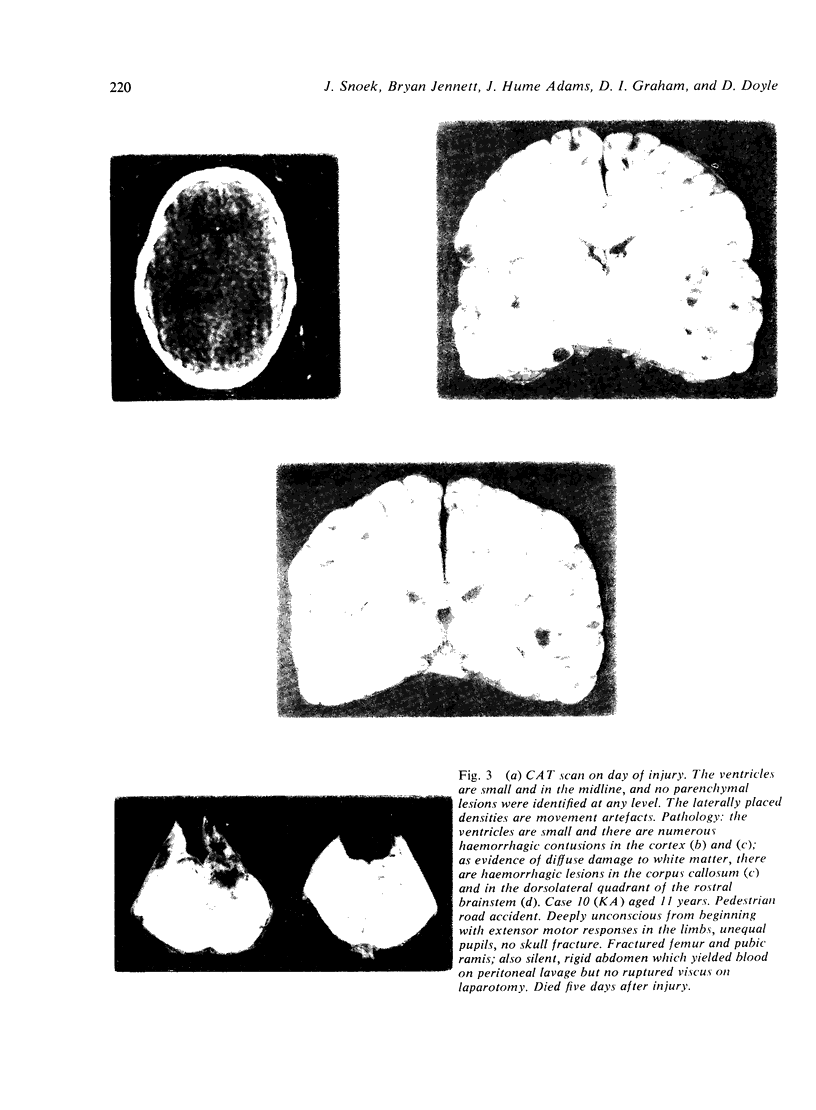

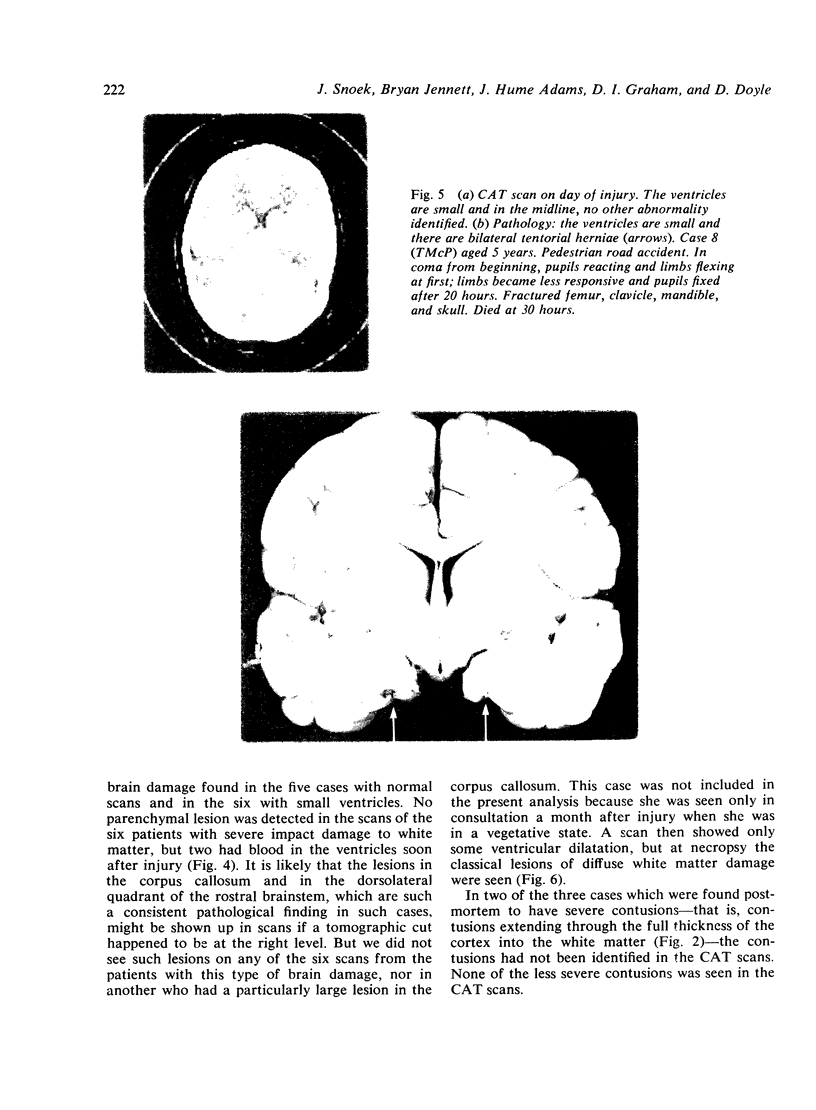

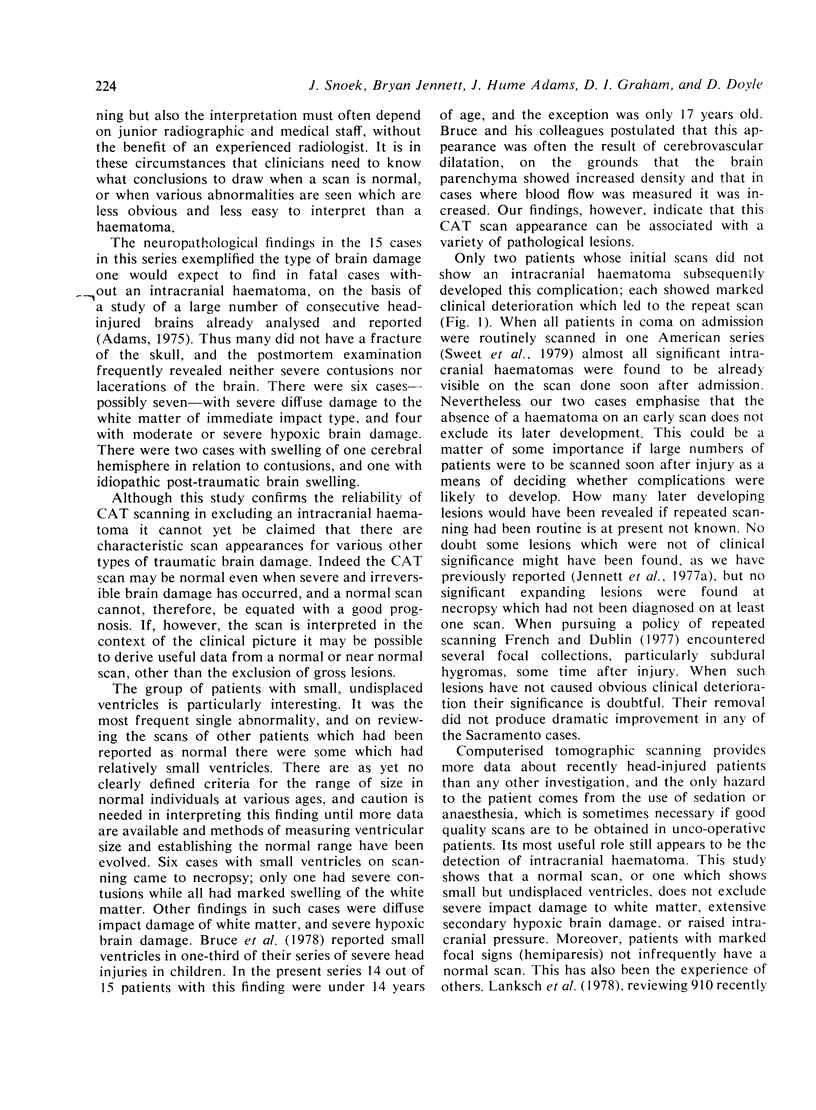
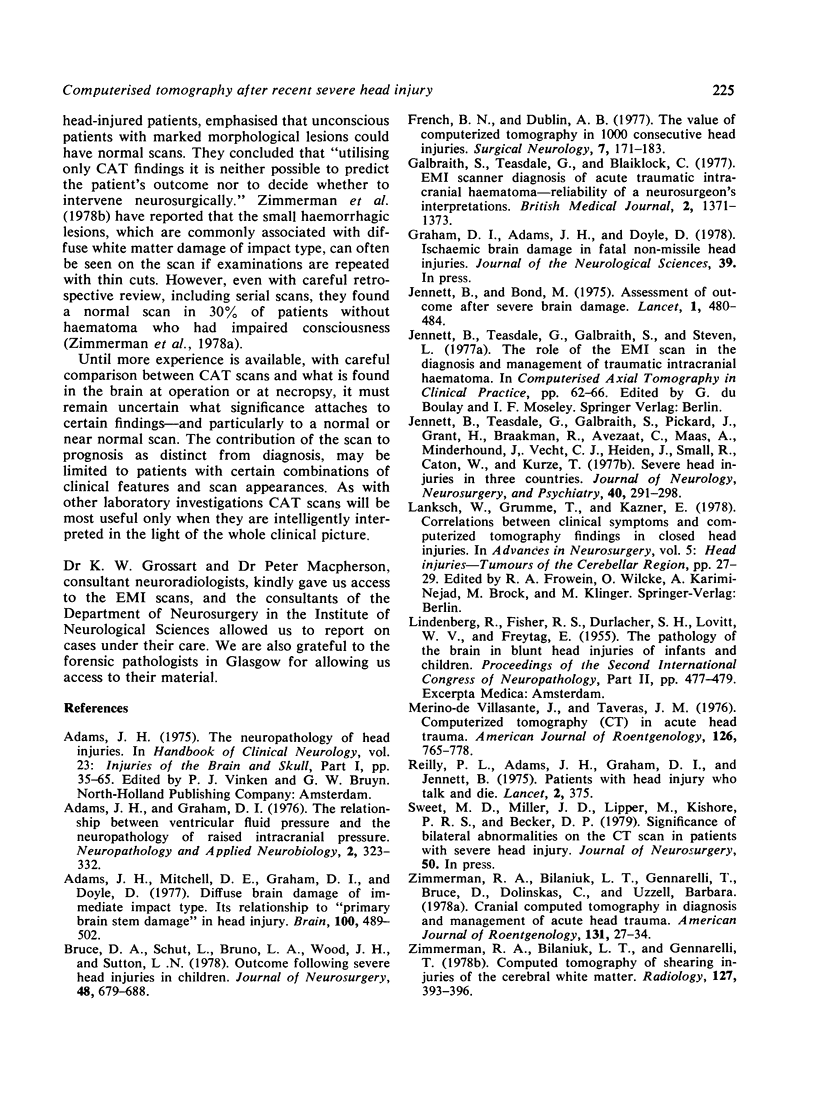
Images in this article
Selected References
These references are in PubMed. This may not be the complete list of references from this article.
- Adams H., Mitchell D. E., Graham D. I., Doyle D. Diffuse brain damage of immediate impact type. Its relationship to 'primary brain-stem damage' in head injury. Brain. 1977 Sep;100(3):489–502. doi: 10.1093/brain/100.3.489. [DOI] [PubMed] [Google Scholar]
- Bruce D. A., Schut L., Bruno L. A., Wood J. H., Sutton L. N. Outcome following severe head injuries in children. J Neurosurg. 1978 May;48(5):679–688. doi: 10.3171/jns.1978.48.5.0679. [DOI] [PubMed] [Google Scholar]
- French B. N., Dublin A. B. The value of computerized tomography in the management of 1000 consecutive head injuries. Surg Neurol. 1977 Apr;7(4):171–183. [PubMed] [Google Scholar]
- Galbraith S., Teasdale G., Blaiklock C. Computerised tomography of acute traumatic intracranial haematoma: reliability of neurosurgeons' interpretations. Br Med J. 1976 Dec 4;2(6048):1371–1373. doi: 10.1136/bmj.2.6048.1371. [DOI] [PMC free article] [PubMed] [Google Scholar]
- Jennett B., Bond M. Assessment of outcome after severe brain damage. Lancet. 1975 Mar 1;1(7905):480–484. doi: 10.1016/s0140-6736(75)92830-5. [DOI] [PubMed] [Google Scholar]
- Jennett B., Teasdale G., Galbraith S., Pickard J., Grant H., Braakman R., Avezaat C., Maas A., Minderhoud J., Vecht C. J. Severe head injuries in three countries. J Neurol Neurosurg Psychiatry. 1977 Mar;40(3):291–298. doi: 10.1136/jnnp.40.3.291. [DOI] [PMC free article] [PubMed] [Google Scholar]
- Merino-deVillasante J., Taveras J. M. Computerized tomography (CT) in acute head trauma. AJR Am J Roentgenol. 1976 Apr;126(4):765–778. doi: 10.2214/ajr.126.4.765. [DOI] [PubMed] [Google Scholar]
- Reilly P. L., Graham D. I., Adams J. H., Jennett B. Patients with head injury who talk and die. Lancet. 1975 Aug 30;2(7931):375–377. doi: 10.1016/s0140-6736(75)92893-7. [DOI] [PubMed] [Google Scholar]
- Zimmerman R. A., Bilaniuk L. T., Gennarelli T., Bruce D., Dolinskas C., Uzzell B. Cranial computed tomography in diagnosis and management of acute head trauma. AJR Am J Roentgenol. 1978 Jul;131(1):27–34. doi: 10.2214/ajr.131.1.27. [DOI] [PubMed] [Google Scholar]
- Zimmerman R. A., Bilaniuk L. T., Genneralli T. Computed tomography of shearing injuries of the cerebral white matter. Radiology. 1978 May;127(2):393–396. doi: 10.1148/127.2.393. [DOI] [PubMed] [Google Scholar]




